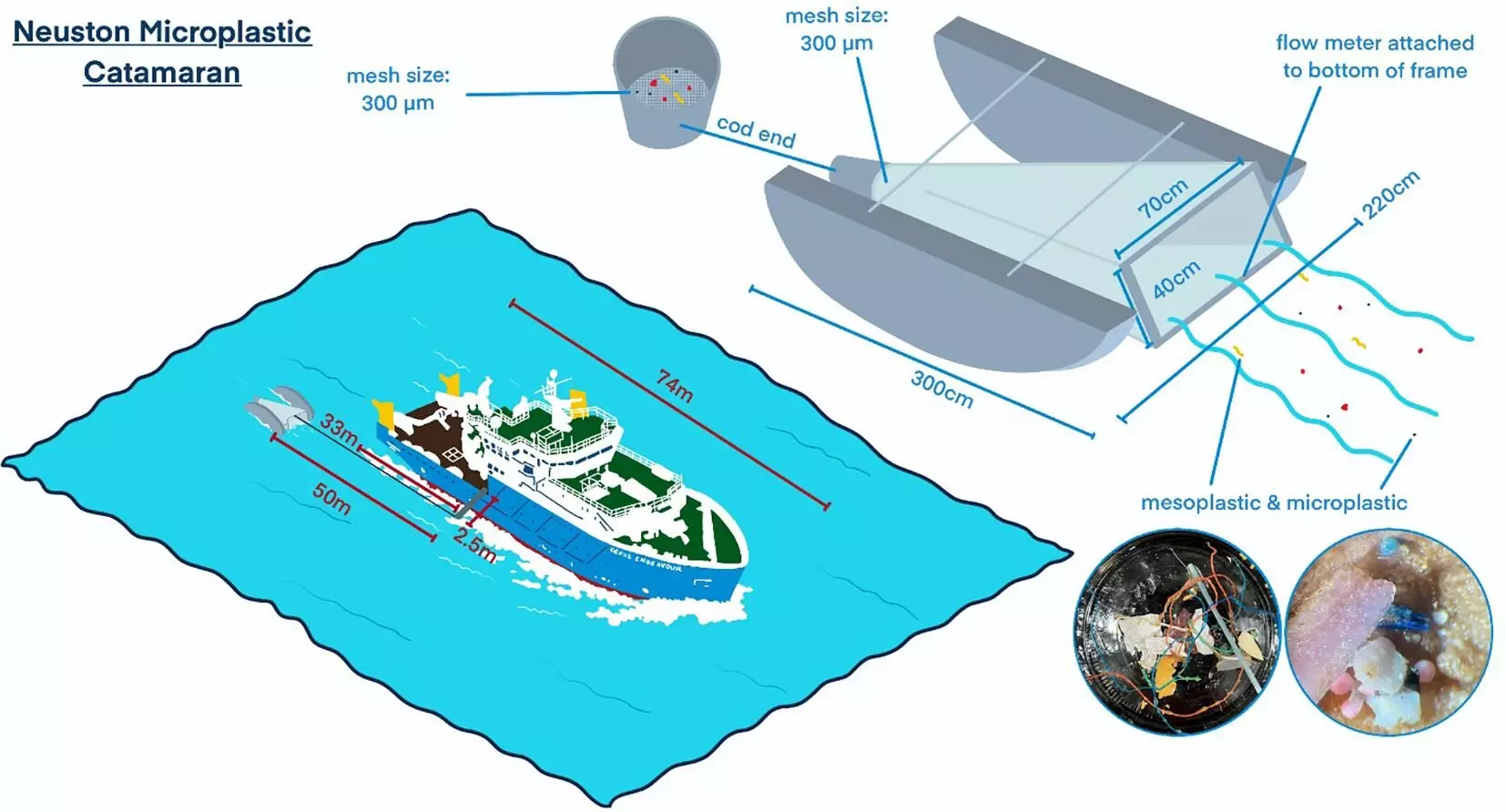Microplastic pollution has emerged as a significant environmental concern in recent years, primarily due to its impact on marine ecosystems and the health of the planet. As the world grapples with an escalating plastic crisis, understanding the intricacies of microplastic distribution and accumulation is crucial. Recent research has specifically highlighted the North Sea as a region requiring attention, revealing that not all plastics observed on the surface tell the complete story of marine contamination.
The annual influx of plastics into the ocean is daunting, estimated to reach up to 12.7 million tons. This staggering figure includes contributions from both terrestrial sources, such as rivers, and marine-based activities, including fishing and shipping. Despite the visible plastic waste that floats on the ocean’s surface, researchers indicate a significant portion of microplastics may be sinking to the seabed, leading to the identification of ‘plastic sinks.’ These unseen reservoirs can exacerbate the problem by allowing pollution to accumulate and persist in the environment without direct observation. Consequently, understanding the distribution of microplastics, especially in crucial body waters like the North Sea, is imperative.
In a groundbreaking study published in *Frontiers in Marine Science*, a team led by Dr. Danja Hoehn employed advanced tools to investigate the microplastic concentrations in the North Sea during 2022. By utilizing a specialized Neuston Microplastic Catamaran equipped with technology to capture surface plastics, researchers meticulously gathered data to present a clearer picture of marine contamination. Their findings showed that the Southern Bight of the North Sea harbors unexpectedly high concentrations of microplastics, peaking at 25,000 items per square kilometer, a figure significantly higher than nearby offshore locations.
The study also categorized the microplastics, revealing that polyethylene, polypropylene, and polystyrene dominated the samples. This breakdown not only helps in identifying potential sources of pollution—like common consumer goods and packaging—but also raises critical questions about the products fueling this contamination. For instance, even though microbeads in cosmetics are banned in the UK, their presence is apparent, underscoring the transboundary nature of plastic pollution caused by global currents.
The intriguing aspect of this research lies in its revelation of pollution hotspots along the East Anglian coast, demonstrating how microplastic concentrations can vary dramatically even across relatively short distances. These findings highlight the complex dynamics of ocean currents in redistributing waste, which raises challenges regarding local versus global frameworks for addressing plastic pollution. While the UK has shown air concentrations lower than those found off the coasts of Spain and Portugal, the issue remains sufficiently severe to warrant immediate action.
Current Efforts and Future Directions
Comprehending the situation is just one facet of the challenge—tackling plastic pollution necessitates ongoing efforts at national and international levels. Various initiatives are underway, such as the UK’s Marine Strategy aimed at developing indicators for microplastics in marine sediments. Additionally, the North-East Atlantic Environmental Strategy focuses on reducing marine litter inputs, and the UN Environmental Agency has set a goal to enact legally binding measures to curtail plastic pollution by 2040.
Despite these promising initiatives, a stark reality remains: the demand for plastics continues to rise, surpassing 400 million tons annually. The challenge, therefore, lies not only in cleaning up existing pollution but also in fundamentally rethinking production, consumption, and waste management practices.
As microplastic pollution continues to pose an existential threat to marine ecosystems, it becomes clear that immediate and sustained action is imperative. With meticulous studies revealing the unseen extent of pollution, stakeholders at every level—the government, industries, and consumers—must commit to transformative practices that ensure the health of our oceans for future generations. Only through collaborative efforts and comprehensive understanding can we hope to combat the tide of plastic pollution effectively. Addressing the intricate dynamics of microplastic contamination today is essential to securing a sustainable marine environment tomorrow.


Leave a Reply